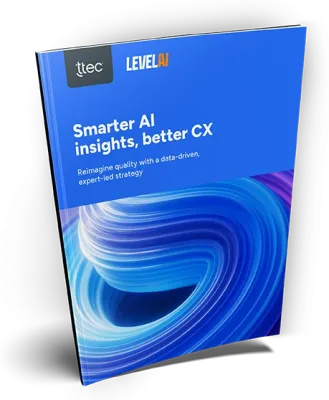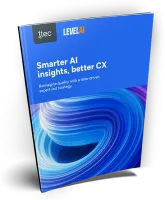It is human nature to desire the latest products and technology. However, these days a product often becomes outdated within days of its purchase. This is especially true for large and infrequent purchases, like vehicles. That is why it is essential for manufacturers to think ahead and anticipate future customer needs when they develop products. Today's competitive market requires adaptability and forward thinking.
Ford has taken this philosophy to heart. Paul Mascarenas, the company's Chief Technical Officer, explains that innovation and technological advances allow customers to keep up with the latest advancements without having to go to a dealership. "Our goal is to add value through the smart application of technology and it starts with listening to the customer," he says.
In this interview with Customer Strategist, Mascarenas talks about how Ford listens to customers to determine their needs and get new ideas, how the organization puts the power of choice in the hands of customers, and how the company invests in research to remain innovative.
Customer Strategist: Ford is synonymous with the car industry. However, every organization—even pioneers like Ford—needs to change according to the times. What makes Ford an innovative company?
Paul Mascarenas: Ford is an automotive company, but we are also a technology company, and have put practices in place to foster innovation and technological advances. Integral to this shift towards technology was the launch of Ford SYNC in 2007 and our partnership with Microsoft. We saw the consumer trends in technology, including the proliferation of smartphones and connected devices, and recognized our customers' need to stay connected safely and smartly while behind the wheel. The introduction of SYNC five years ago has since enabled us to leverage the idea of the car as a platform, which allows us to update automotive technology at the same pace as consumer electronics companies.
CS: How does Ford use technology to be more customer-focused?
PM: Ford listens and responds to customer feedback on a regular basis to provide continuous improvement of our products and technology. A key example of how Ford is changing is that we can now offer software upgrades to customers that they can install themselves, eliminating the need to visit a dealership. Cars are big, infrequent purchases, and often the technology that the customer brings into the car, such as a mobile phone, evolves faster [than they will change the car], making it difficult for us to plan for future compatibility with the car. The SYNC connectivity system allows us to deliver on the concept of the "upgradable car" so we can simply upgrade the system with a software update, no different than your smartphone or laptop.
In March of last year, we mailed USB flash drives to existing customers with SYNC-equipped vehicles—at no additional cost—so drivers could install the software themselves, or they could choose to go to the dealer if this was more convenient for them. The update was the result of customer feedback about the SYNC system and it significantly improved the driving experience, incorporating new, more visually impactful, and clear graphics, faster performance and responsiveness, improved voice command recognition, and an overall simpler interface. We also added new features including better phone compatibility, support for tablet computers, and improved navigation maps. The ability to directly receive customer feedback—whether through market research, our customer assistance call center or via online chat forums—and act on it in a timely matter with software updates will change vehicle ownership expectations going forward.
CS: Today's customers want life to be as easy as possible and look for products that simplify their lives. Ford is advertising the keyless car. How else is the organization striving to make customers' lives simpler?
PM: Ford is dedicated to introducing technology and products that make drivers' lives simpler. For instance, our new 2013 Escape has a great feature called the "hands-free liftgate," a gesture-based control that automatically opens the liftgate with a simple swipe of your foot underneath the rear bumper when your hands are full. We now look at the experiences that technology can enable, versus just the technology itself. Our goal is to add value through the smart application of technology and it starts with listening to the customer.
CS: There is no one-size-fits-all when it comes to customers. Your latest Ford Fusion car has five different engines to give customers the ability to choose the one that best fits their lifestyle. How did customers react to this?
PM: We call this the "Power of Choice" because it puts the power back into the customers' hands. We do not want to dictate what our customers drive, especially when it comes to fuel economy. If they want to drive a hybrid, they should be able to choose the type of vehicle that they want that hybrid power-train in, such as a sedan or a hatchback. If someone wants an SUV, they should be able to get one with class-leading fuel economy no matter if they need the larger engine for towing. Our customers are responding very well to having more options that suit their driving needs, but don't require that they sacrifice for fuel economy.
CS: Do you have any future plans to give your customers more choice?
PM: We're just starting to launch our Energi family of plug-in hybrid electric vehicles, the new C-MAX Energi and Fusion Energi. These, along with hybrid electric versions of those vehicles, plus the Focus battery electric sedan, will offer a full portfolio of choices for customers seeking electrified transportation. This is still a new product area for customers, so we want to make sure to offer choices that will meet our customers' lifestyles because the three different types of electric vehicles perform very differently. The all-electric Focus is perfect for a short distance commuter, but maybe not someone who goes on weekend road trips. The hybrids are a great fuel economy choice for those who do not want to have to plug in their vehicles. And the Energi plug-ins will begin to bridge both worlds without limiting the ability for long distance travel.
CS: Organizations gather a huge amount of customer data, which they use to make improvements to both their products and service. How does Ford leverage customer data to become more customer-centric and embark on innovations to best serve the needs of its client base?
PM: Ford is a very data-driven company, and we use data in a variety of ways. For instance, we use internal and external social media channels to help us gather and evaluate potential new feature ideas and technologies for our cars. We also use transactional information to help us better serve our dealers so they order and stock the vehicles that customers are most interested in. We use Google Trends, which measures the popularity of search terms, to help inform our own internal sales forecasts. Along with other internal data we have, we use that to build a better forecast. It's one of the inputs for our sales forecast. In the past, the focus would have been on what we sold last week. Now it's what we sold last week plus the popularity of the search terms [we track].
CS: Ford is working with other automakers to test vehicle-to-vehicle communication technology. How would this impact the customer experience?
PM: Vehicle-to-vehicle communication would greatly impact the customer experience by delivering the next level of active safety. This technology would enable cars to talk to each other, allowing the car to see beyond the visual limitations of the driver. The result could be early warning and preventative measures that would greatly reduce accidents. We are testing this technology here in the U.S. as well as in Europe, and see tremendous potential for it.
CS: Ford has been partnering with a number of technology companies. You have even opened up a lab in Silicon Valley to work on new projects. How have these technology partnerships helped Ford become a more innovative company?
PM: Silicon Valley is the heart of the technology industry, and in opening a lab there we have been able to work with startups, technology influencers, and universities to help continue fostering a culture of innovation within Ford. But, the most important part is that these partnerships have helped bring new ideas, concepts, and thought processes to us because we know that the best ideas often come from someone else. The team in Palo Alto is focused on scouting for new technologies, implementing open innovation programs to engage developers, and seeking solutions to ensure the future of mobility.
CS: From an executive standpoint, what do you think is the biggest challenge to being an innovative company?
PM: The biggest challenge is maintaining the pace of innovation. At Ford, we have a culture of innovation that was established by Henry Ford. Our challenge is to keep that spirit alive amongst our employees by providing them with the motivation and tools that foster innovative thinking. It also means acknowledging that innovation doesn't just come from inside the company, and therefore requires setting up the appropriate ways to engage 'outsiders' to innovate on the behalf of our customers.

















